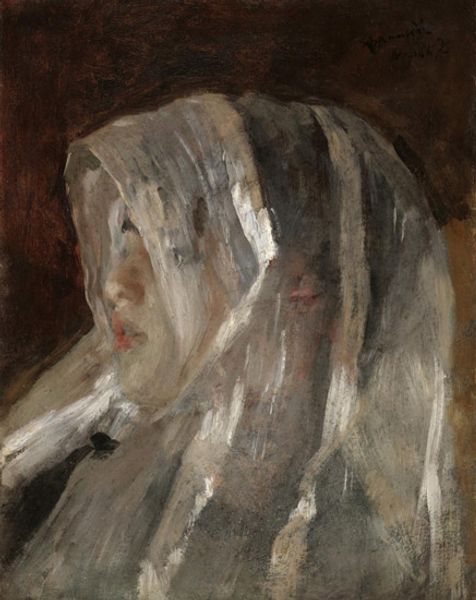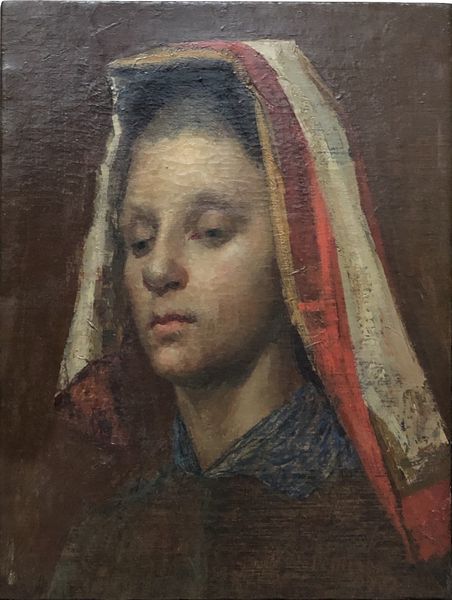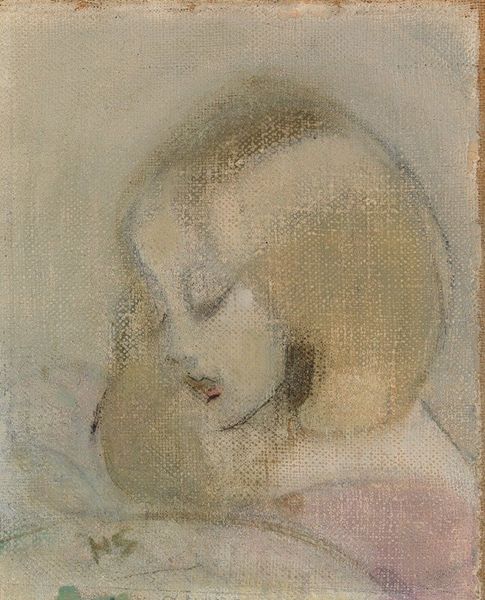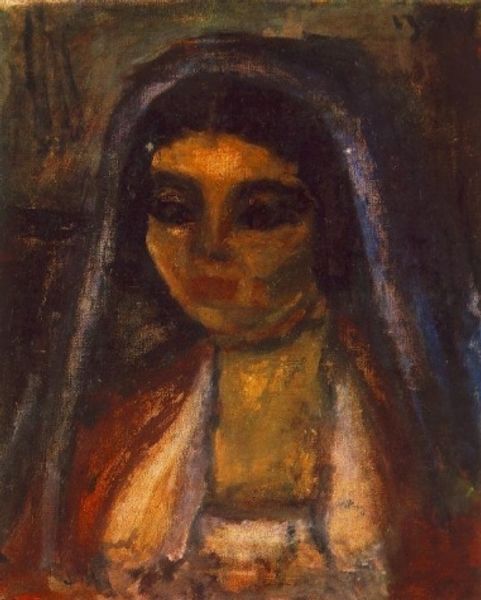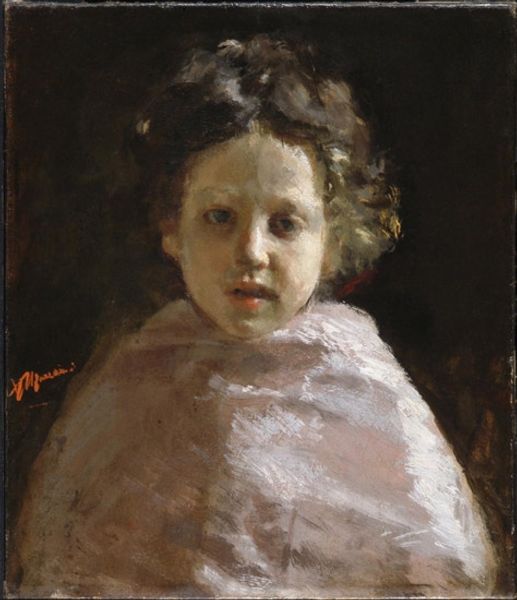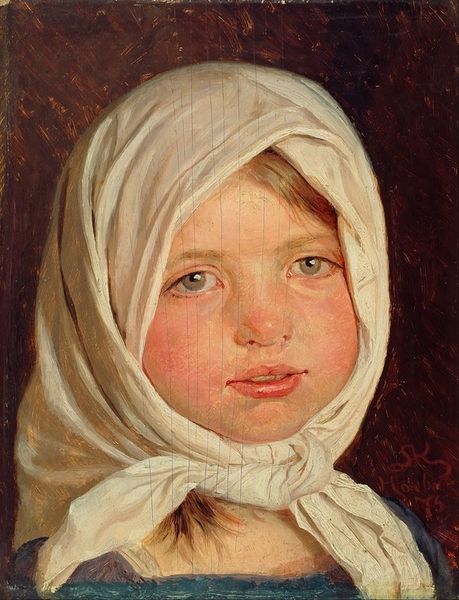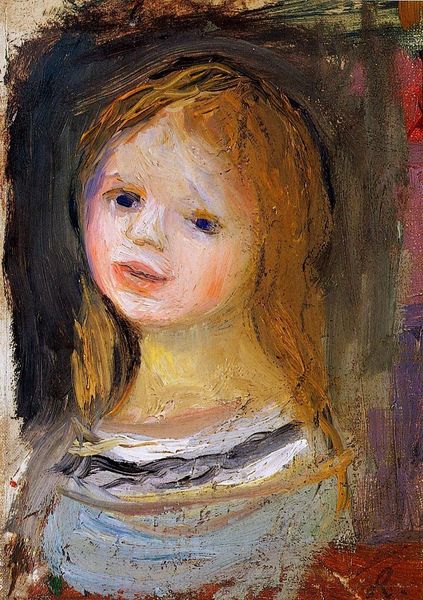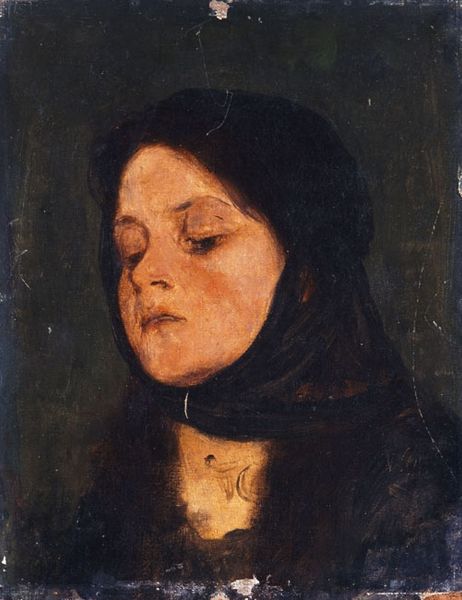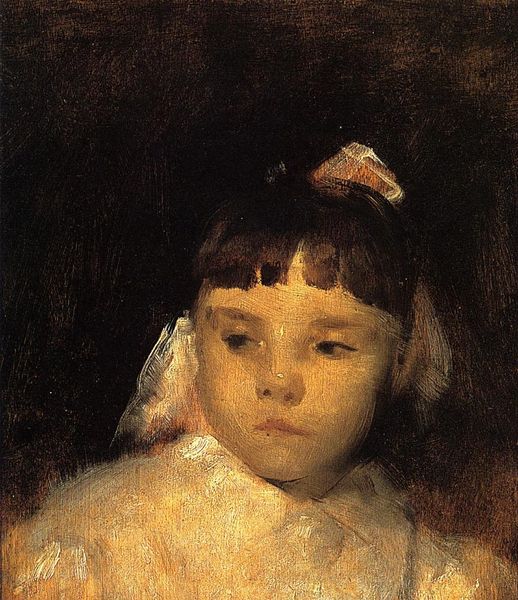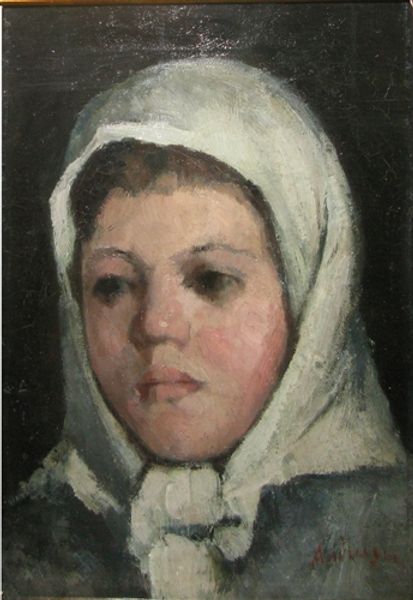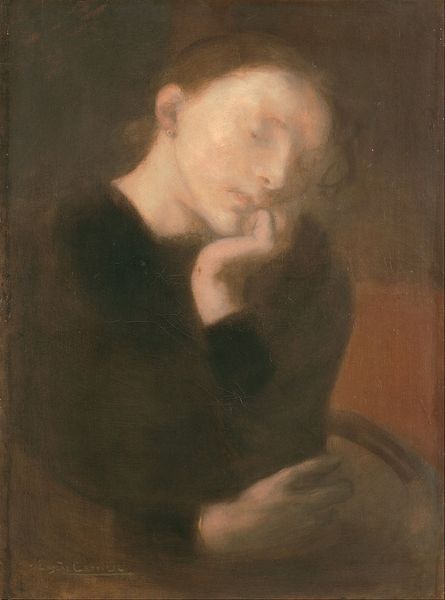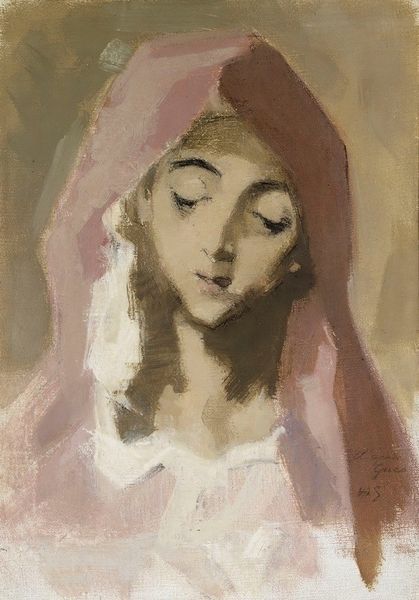
painting, oil-paint
#
portrait
#
painting
#
oil-paint
#
german-expressionism
#
oil painting
#
expressionism
Dimensions: 45.3 x 66.2 cm
Copyright: Public domain
Editor: Here we have Paula Modersohn-Becker's "Still Life, Child's Head with a White Cloth," painted in 1908 with oil on canvas. The child's face, framed by the stark white cloth, seems both serene and melancholic to me. What strikes you about this work? Curator: I am fascinated by Modersohn-Becker's conscious deployment of materials to challenge conventional class-based ideas about artistic subjects and the processes employed. The "still life" designation applied to a human subject, for example. Consider the visible brushstrokes and unblended application of the oil paint; they resist academic polish. Doesn’t this raw handling of the medium democratize the act of representation itself? How might that flattening relate to contemporary labor conditions, or the mass manufacture of images, and how might these considerations make an argument for considering it Expressionist? Editor: That's a really interesting perspective! It almost feels like she's deliberately avoiding idealizing the subject, emphasizing the material reality of the painting itself. So, instead of beauty, she prioritizes something else? Curator: Precisely! She foregrounds the labor involved. Think about the texture of that white cloth, crudely rendered. Is it mere "craft," or does its presence elevate domestic work to a position worthy of aesthetic examination and debate? And the deliberate simplicity in representing the child... Do you feel there is a commentary on the exploitation and commercialisation of childhood evident through the deliberate materiality of her choices? Editor: I see what you mean! The roughness of the cloth contrasts sharply with traditional, idealized portraits of children from that time. It suggests a different class background, a different lived reality for this child. Curator: And by using oil paint in such a manner, she aligns painting, labor, and consumption into a visually cohesive statement on German Expressionism during the time of shifting manufacturing. Editor: I hadn't considered the connection to labor and material conditions before, but that definitely changes how I see the painting. Thanks! Curator: Indeed! Approaching the materiality of Modersohn-Becker’s expression deepens our knowledge about not only labor, but also consumerism and social issues that transcend boundaries within her own cultural-historical context.
Comments
No comments
Be the first to comment and join the conversation on the ultimate creative platform.
